Mucosal Diseases (Without Diarrhea)
1/19
Earn XP
Description and Tags
A set of flashcards summarizing key concepts regarding Mucosal Diseases, with a focus on Foot-and-Mouth Disease and Bovine Papular Stomatitis.
Name | Mastery | Learn | Test | Matching | Spaced |
|---|
No study sessions yet.
20 Terms
What is the etiology of Foot-and-Mouth Disease (FMD)?
It is caused by Aphthovirus, a small single-stranded RNA positive sense virus from the Picornaviridae family.
Very very contagious and affects cloven-hoofed animals.
7 serotypes, and there is no cross-protection between subtypes → A, O, C, Asia 1, Southern African Territories (SAT) 1, SAT 2, and SAT 3
Morbidity 100%
Mortality less 1%
What are the key clinical signs of Foot-and-Mouth Disease?
Incubation 2-12 days. Oral lesions, vesicles on the tongue and gums, hoof lesions, excess salivation with cows, abortion, death in young animals, teat lesions, and decreased milk production. Goats and sheep have minimal clinical signs
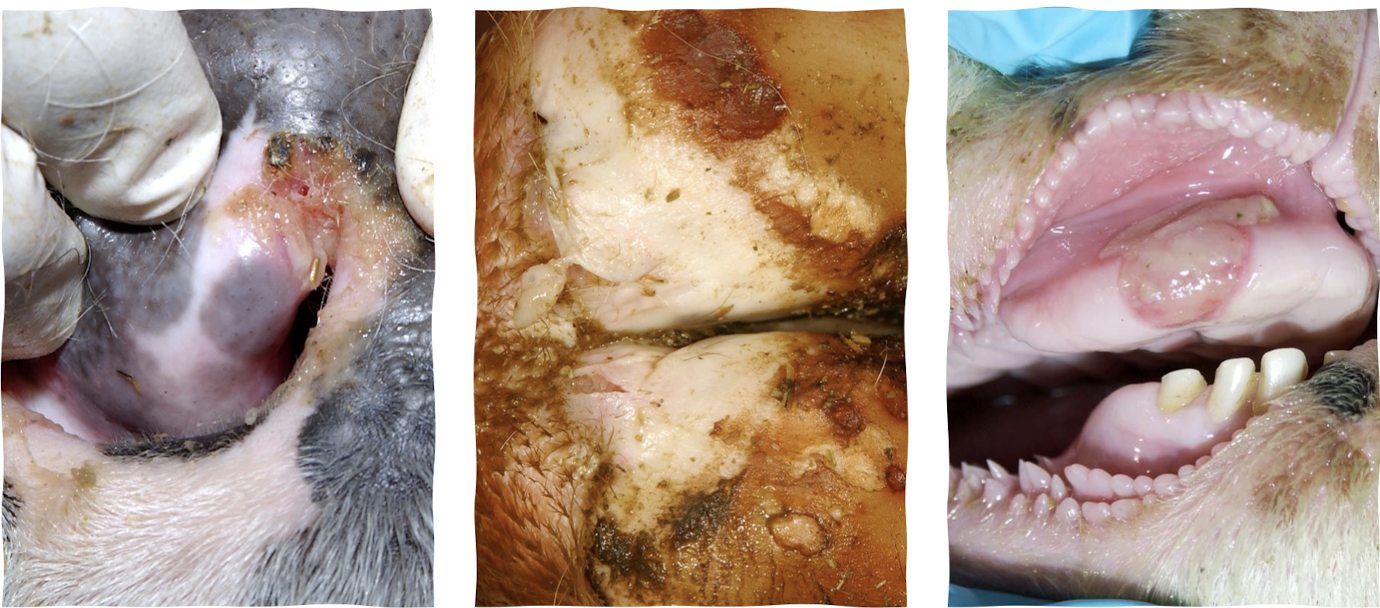
Pathogenesis of FMD?
Involves initial replication of the virus in the oropharyngeal epithelium, leading to the formation of vesicular lesions. The virus then spreads systemically, causing immune response and resulting in clinical signs such as fever and pain. fever 2-21 days
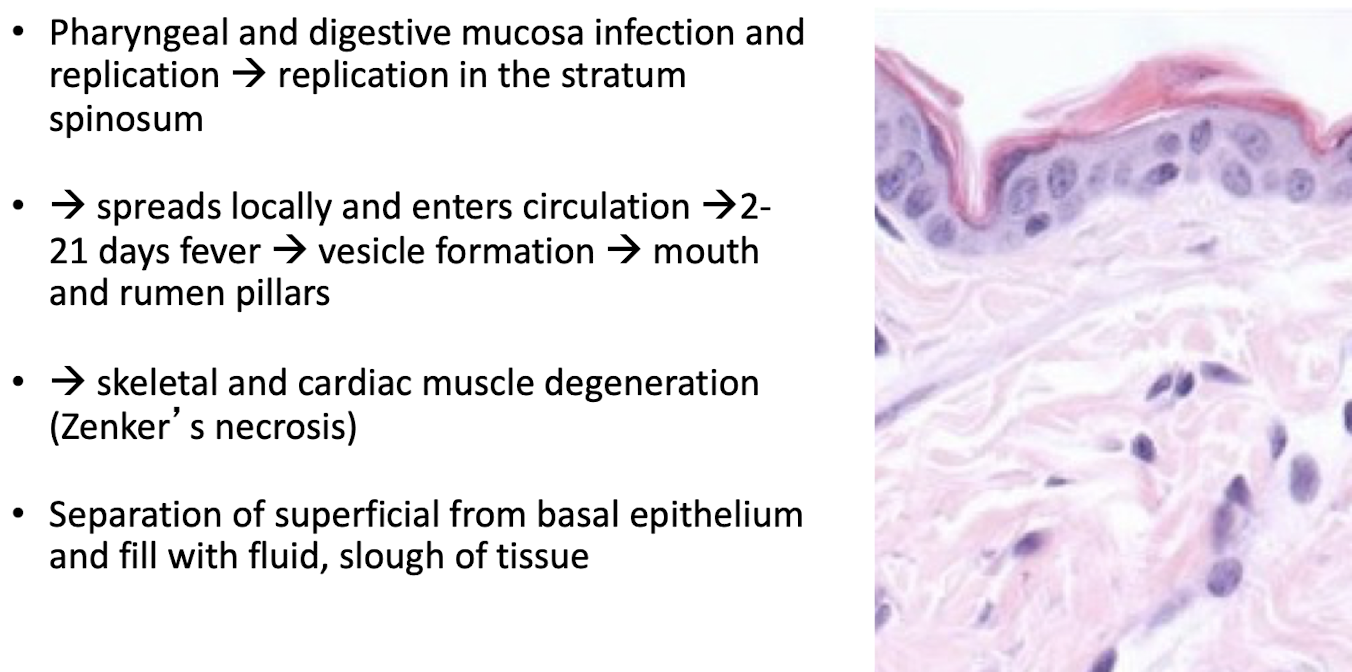
What is a notable method of transmission for Foot-and-Mouth Disease?
Transmission occurs via respiratory aerosols, direct contact, and ingestion of infected animal parts. African cafe buffalo are permanent carriers
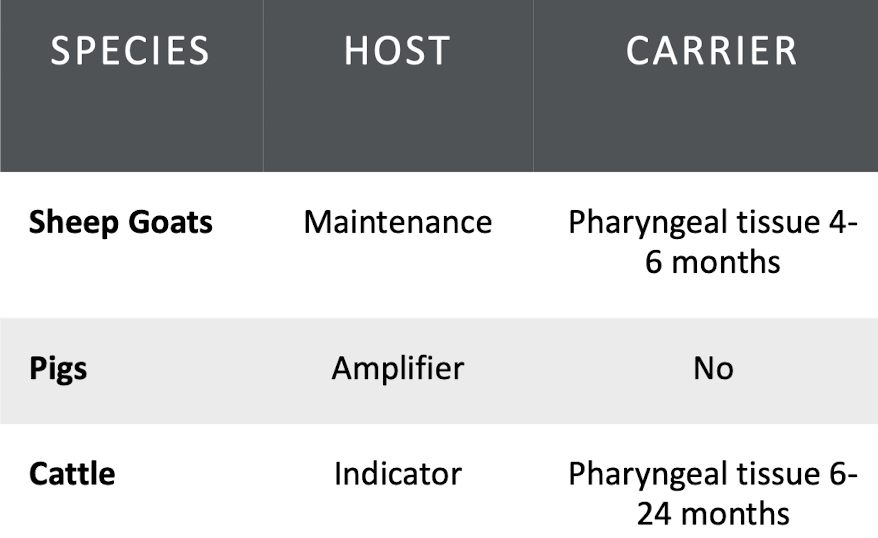
Differential diagnosis for FMD
includes diseases like vesicular stomatitis, contagious ecthyma, and other viral infections that cause similar clinical signs.
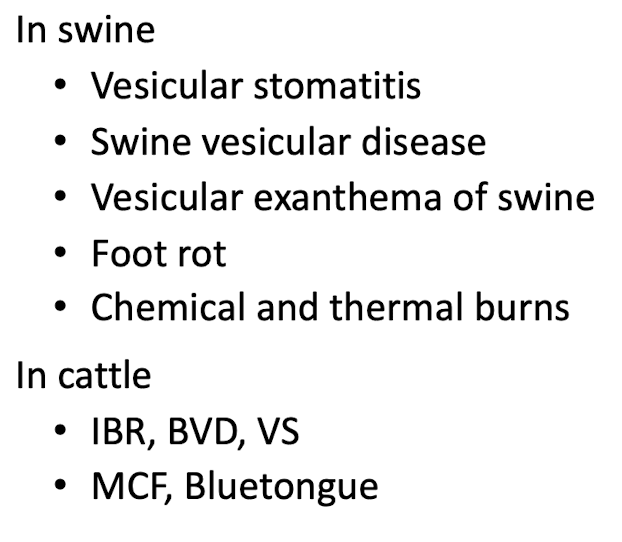
What preventive measures are recommended for Foot-and-Mouth Disease?
Strict import restrictions and biosecurity protocols for livestock facilities, depopulation, vaccinations against A, O, C and are not good for producing long lasting immunity
What collection methods are recommended for diagnosing Foot-and-Mouth Disease?
Virus isolation, identification, antigen detection (PCR), and notify authorities before collecting samples.
PM lesions of FMD
“tiger heart”
dry lesions in pigs
fluid filled blisters, red erosion, fibrin coating, white area on the heart and other organs
Etiology of Vesicular Stomatitis
Rhabdovirus, enveloped, single stranded RNA. 4 viruses and no cross immunity between types. Reportable
naturally infects cattle, horses, swine, and llamas
mostly just in the americas
Morbidity 90%
Mortality low
Transmission of VS
Insects(black fly, sand fly), mechanical, direct, indirect
Clinical signs VS
Incubation 3-5 days
fever
oral lesions
erosions of gums and tongue
ulcer on teats, interdigital space, coronary band
dec milk production
horses are severely affected → droolong, chomping, mouth rubbing, lameness
Diagnose VS
Viral culture
RT-PCR
immuno- fluorescence
complement fixation tests
antigen-capture ELISA.
Antigen-capture ELISA can also be used for serotyping
Electron microscopy: distinguishing VSV from other viruses (FMD virus)
PM lesions of VS
Death is rare
erosive ulcerative lesions
degeneration of epithelial cells
virus in fresh lesions
Treatment for VS
non-specific
supportive care
disinfect
rest and feed soft food
separate from the unaffected
Prevention for VS
vaccines but not proven to be efficacious
PPE
quarantine of affected
no animal movement
Etiology of Bovine Papular Stomatitis
Bovine Papular Stomatitis is caused by a parapoxvirus, primarily affecting young cattle 2wks-2yrs. It results in papular lesions on the oral mucosa and is often associated with a mild respiratory infection
morbidity close to 100%
spreads through direct contact with infected animals
Clinical signs of BPS
Lesions in the mouth, including papules and sores, which may lead to drooling and difficulty eating. Affected animals often show signs of discomfort or reduced appetite.
anorexia
weight loss
mild fever
no overt systemic signs
buccal or nasal papules
hyperemic foci
usually heals within 3-5 weeks
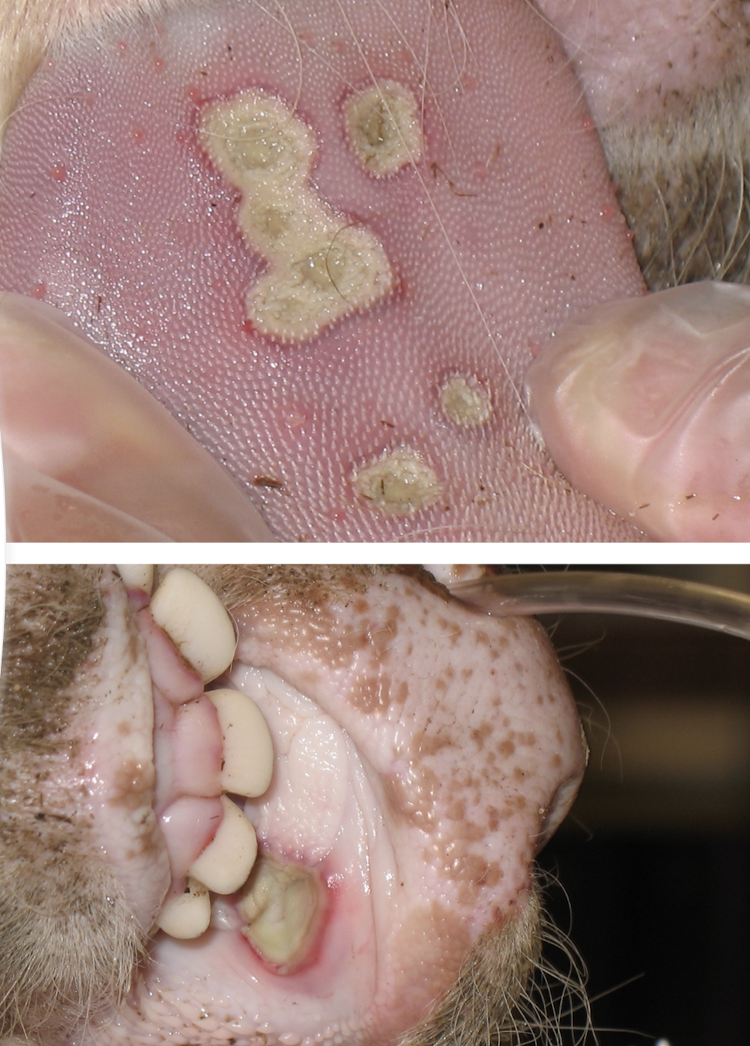
Ddx for BPS
BVD-MD • MCF • FMD/VS/ • Pseudocowpox (on teats)
Diagnose BPS
clinical appearance with age
electron microscopy of scab → looks like a ball of yarn
histopath → eosinophilic intracytoplasmic inclusions
Treatment for BPS
Usually self limiting
cryo with liquid nitrogen
autologous vaccines
supportive therapy
zoonotic